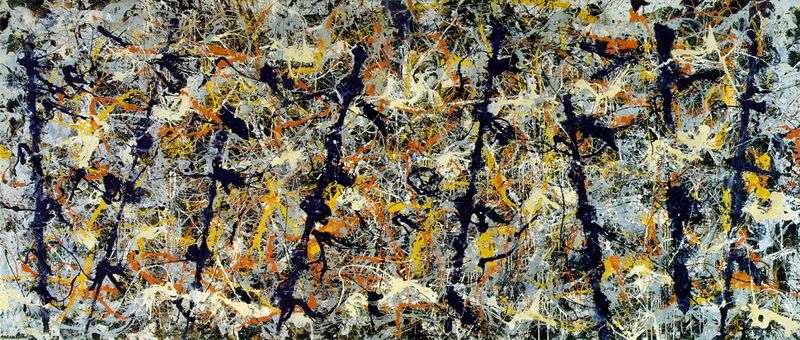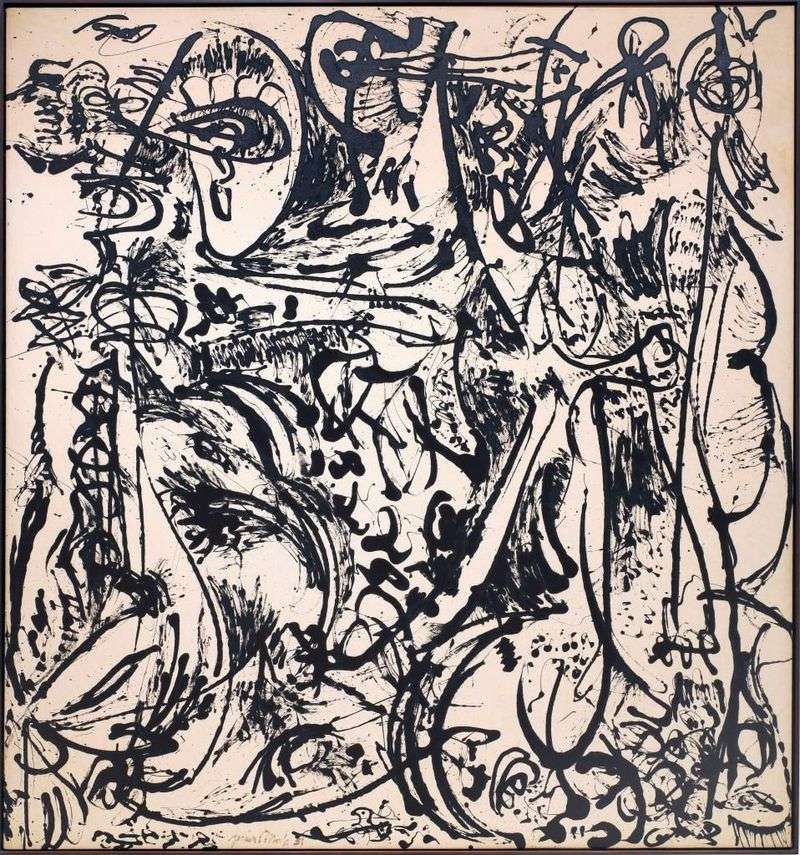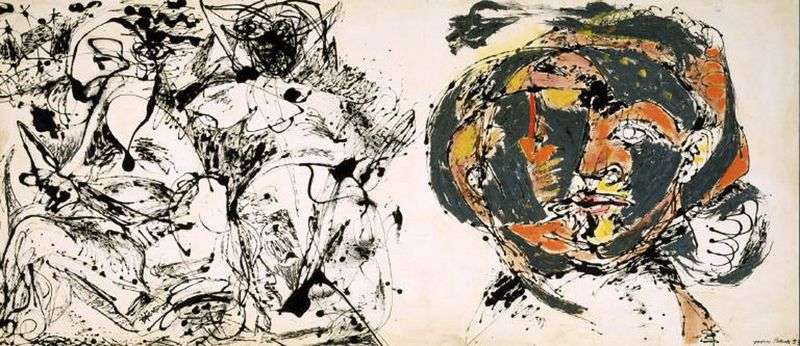
“Convergence” in 1952. Artist canvas covered dense web of black paint, then added other colors – very bright and “acid”, which became “common place” in the days of pop art, but in the early 1950s were a novelty.
In 1964, the publishing Springbokvypustilo puzzle, “Convergence” from 340 pieces, which immediately received the title of “the most difficult puzzle in the world.” Now the museum shop sells puzzles with the same picture, but from 1000 pieces!
At first glance, Pollock’s paintings appear to be chaotic, but seeing them up close, you realize that they have a clear internal structure. The same can be said about the work of another famous expressionist with a tragic fate – Jean-Michel Basquiat.
 Blue Poles by Jackson Pollock
Blue Poles by Jackson Pollock Echo by Jackson Pollock
Echo by Jackson Pollock Number 1A by Jackson Pollock
Number 1A by Jackson Pollock Portrait and Sleep by Jackson Pollock
Portrait and Sleep by Jackson Pollock Summer by Jackson Pollock
Summer by Jackson Pollock No 5 by Jackson Pollock
No 5 by Jackson Pollock Autumn Rhythm by Jackson Pollock
Autumn Rhythm by Jackson Pollock Mural by Jackson Pollock
Mural by Jackson Pollock